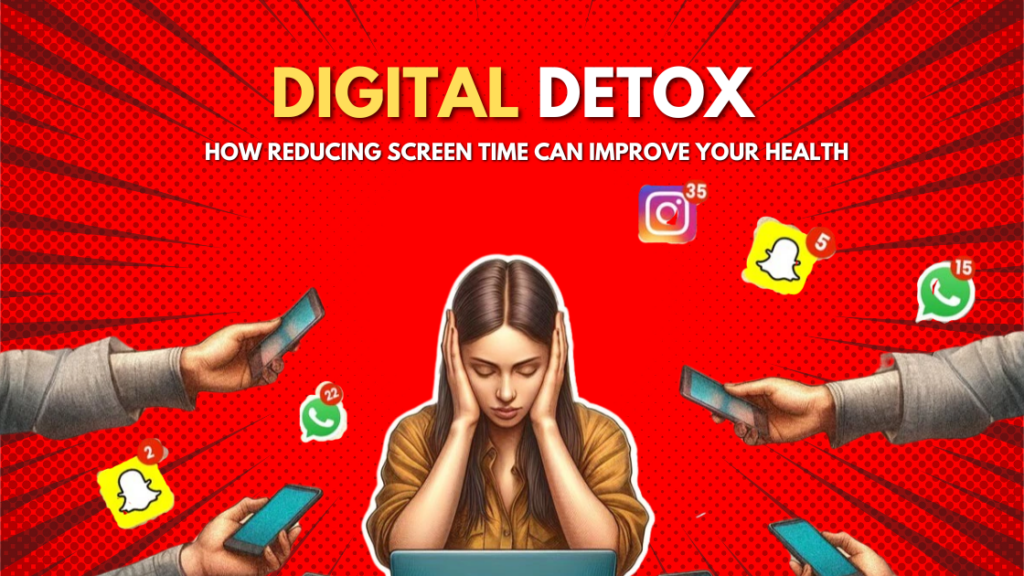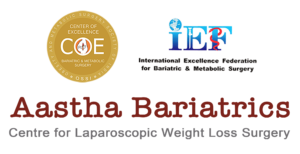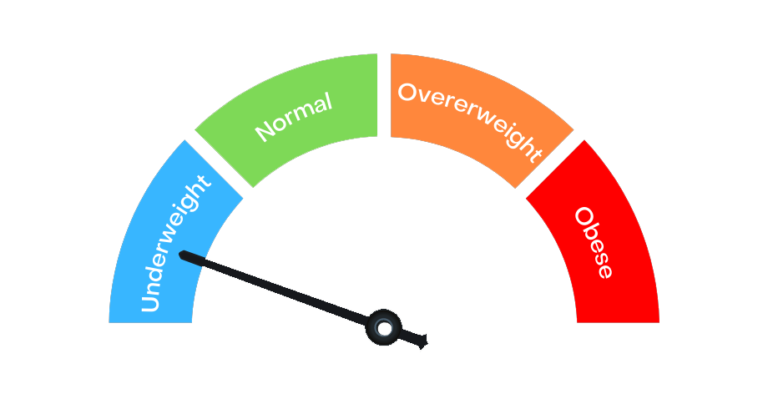
Dt. Vaishali
Bariatric Dietician & Content Writer
Digital Detox - How Reducing Screen Time Can Improve Your Health
Digital detox is the intentional practice of taking a break from using digital devices, such as smartphones, computers, and social media, to reduce stress, improve well-being, and foster a healthier balance between online and offline activities.
A digital detox is closely related to health because excessive screen time and digital dependence can negatively impact physical, mental, and emotional well-being.

Here’s how a digital detox supports health:
1) Physical Health:
Reduced Eye Strain: Prolonged screen use can lead to digital eye strain or “computer vision syndrome,” causing dry eyes, headaches, and blurred vision.
Better Posture: Excessive device use often leads to poor posture, resulting in neck and back pain.
Improved Sleep: Reducing screen time, especially before bed, minimizes blue light exposure, which can disrupt sleep patterns.
Obesity: Excessive digital device usage can contribute to obesity due to its impact on physical activity, diet, and overall lifestyle.
2) Mental Health:
Lower Stress Levels: Constant notifications and digital engagement can increase stress and anxiety. A detox helps reduce this overload.
Enhanced Focus: Disconnecting improves attention span and cognitive function, combating the distractions of digital multitasking.
Reduced Risk of Depression: Overuse of social media can lead to comparison, negative self-esteem, and feelings of isolation.
3) Emotional and Social Health:
Improved Relationships: Spending less time online fosters better in-person connections and communication.
Increased Mindfulness: A digital detox encourages being present in the moment, boosting emotional awareness and overall happiness.
Tips and Strategies for a Successful Digital Detox:
1) Set Clear Goals
Decide why you want a digital detox. Common reasons include reducing screen time, improving sleep, reconnecting with others, or boosting productivity.
2) Start Small
Begin with short breaks, like an hour or two each day, and gradually extend to longer periods like a weekend or even a week.
3) Establish “No-Tech” Zones
Designate specific areas in your home, such as the bedroom, dining area, or bathroom, as tech-free spaces.
4) Create a Schedule
Allocate specific times for using devices and stick to them. For example, check emails only during work hours.
5) Turn Off Notifications
Disable non-essential notifications to reduce distractions and prevent the urge to constantly check your devices.
6) Use Alternatives
Replace digital activities with offline ones like reading a book, exercising, cooking, journaling, or spending time outdoors.
7) Reconnect With People
Spend quality time with friends and family without digital interruptions. Plan in-person activities or have meaningful conversations.
8) Set Boundaries Post-Detox
After your detox, establish sustainable digital habits, such as regular “offline” hours or reduced social media use.
What are the benefits of a Digital Detox?
Conclusion –
To wrap up, a digital detox offers a valuable opportunity to reconnect with ourselves, improve mental clarity, and enhance our overall well-being.
In today’s fast-paced, screen-driven world, taking time to unplug is essential for reducing stress, boosting productivity, and fostering deeper connections with those around us.
Remember, balance is key. Incorporating regular digital breaks into your routine can lead to a healthier, more mindful lifestyle.
So, why not start today and experience the benefits for yourself?





